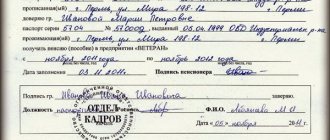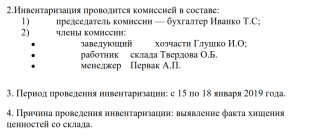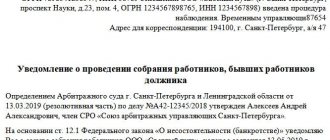Since 2015, the Law “On Insolvency” has been in force. It was adopted to regulate the problem of debts and their payments by individuals. Signs of bankruptcy of an individual are debt obligations in an amount that exceeds to any extent the value of the citizen’s property. It is mandatory to comply with the delay conditions from the date of the last payment of 90 calendar days. An individual should be considered insolvent when the citizen does not have the opportunity to satisfy the demands put forward by creditors in full and pay the obligatory amounts. Signs of bankruptcy for individuals are established by law.
Grounds for declaring an individual insolvent
The reason, the impetus for sending an application to the Arbitration Court (arbitration court) on the issue of recognizing the bankruptcy of an individual are specific signs. The features of bankruptcy of individuals are determined by the resolution adopted on October 26, 2002. It operates under the number 127-FZ and the name “On Insolvency”.
The law noted above indicates that a citizen who foresees the likelihood of financial insolvency in the future can apply to the AC with an application for insolvency. He must show the following signs of bankruptcy of an individual.
- The main sign of bankruptcy of an individual is the cessation of payments to creditors. The debtor does not fulfill direct obligations to the creditor that are already due.
- The second sign of bankruptcy of an individual is the lack of fulfillment of obligations (more than 10%) for a period of more than 1 month after the date on which the obligation to deposit money occurred.
- The third sign of bankruptcy of an individual is considered to be a debt the amount of which exceeds the price of the property of the debtor.
- The fourth sign of bankruptcy of an individual is a situation when future financial receipts do not allow the individual to pay off obligations to each of the existing creditors.
A special feature of the bankruptcy of an individual is the situation in which the debtor is obliged to personally submit a statement of insolvency. An application to the AC must be submitted by a person who has problems fulfilling financial obligations to creditors. Payment of budget payments (fees) is taken into account.
It is necessary to mention the peculiarity of bankruptcy, in which an individual is obliged to turn to the CA. Art. 213.4 of Law No. 127-FZ says that an individual must file an appeal to the court if the payment of money to one creditor is accompanied by the impossibility of issuing debt to other existing creditors.
There are situations when an individual owes one creditor 500 thousand rubles and the same amount to a second. At the same time, he has only 200 thousand rubles intended for the fulfillment of financial obligations. A citizen should begin the bankruptcy process one month from the date when he realized the obvious impossibility of repaying debts due to lack of money.
A sign of bankruptcy is a situation in which an individual owes 500 thousand rubles. to one creditor, but he has no way to pay.
Summarizing the above, we note that a debtor has the right to turn to the AS if there are signs of bankruptcy of an individual:
- presence of debt of 500,000 rubles. and more;
- failure to fulfill financial obligations from 3 months. from the date of occurrence of the obligation to fulfill them.
Options for bankruptcy of individuals
Depending on the complexity of the case and the capabilities of the debtor, bankruptcy of individuals can be implemented in three ways.
- Settlement agreement. This is the simplest and “inexpensive” method. If the parties can agree on the procedure for repaying the debt, secure all the provisions in a document and fulfill it, then as a result the debtor will not be declared bankrupt. You can reach a settlement agreement at any stage of bankruptcy. Any failure to comply with the conditions triggers the next stage of the procedure (Article 213.31 of Law No. 127-FZ).
- Debt restructuring. The bankruptcy trustee, together with the creditors, draws up a payment plan for a period of no more than 3 years. However, in accordance with Art. 213.13 of Law No. 127-FZ, only citizens can take advantage of this opportunity:
- having a permanent income;
- no unexpunged or outstanding convictions in the field of economic crimes;
— have not undergone bankruptcy proceedings within the previous 5 years;
- have not applied for debt restructuring within the previous 8 years.
During this stage, additional restrictions are imposed on the debtor. Thus, an individual cannot independently dispose of property until the debt is fully repaid, purchase shares and other securities, or make other purchases worth more than 50,000 rubles. If the schedule is strictly followed, the individual will not be declared bankrupt.
- Sale of property (Article 213.24 of Law No. 127-FZ). This is the most painful, costly and restrictive method. If it is impossible to carry out the first two stages, or their progress is disrupted, the individual is officially declared bankrupt. All property is included in the register and is subject to sale. This stage usually takes six months, but can be extended by court decision.
All valuable property is subject to sale, except for the only home owned by an individual. But if bankruptcy is related to mortgage debt, then the home can also be sold.
Based on the results of the sale of property, the manager sends money to creditors in accordance with the priority. If the cost of the sold property does not cover the entire amount of the debt, then its balance is written off and the individual is considered released from all obligations to creditors who were included in the register in this case.
List of documents required when submitting an application
A special feature of personal bankruptcy is the release of the debtor from financial obligations. It also implies the possibility of debt restructuring. And, naturally, this implies the sale of possessions necessary to satisfy the claims of creditors with the proceeds.
The management of bankruptcy of individuals is manifested by a number of features. Let's start with the fact that sending an application to the CA is possible if the debtor has the following documents:
- Photocopies of credit agreements, loan agreements. Any papers confirming the basis for the debt are also required.
- A document confirming the formation of financial debt. It can be represented by a certificate issued by bank employees about the presence of debt on the loan. Fines and penalties should also be included.
- A certificate from the bank with data on existing accounts and deposits. Certificates regarding cash balances on accounts and statements of transactions performed over 3 years are required.
- Photocopies of papers that can confirm the existence of the bankrupt citizen’s ownership of the property described by him in the inventory.
- List of creditors. It is drawn up in accordance with the form established by Order No. 530 of the Russian Ministry of Economic Development.
- Photocopies of documents confirming transactions completed three years before filing a bankruptcy application. Transactions on securities, transport, real estate, existing shares in the authorized capital are considered.
- Information regarding the profit received by an individual for three years, any information regarding the tax amounts withheld from the citizen.
- Information from the Pension Fund of the Russian Federation regarding the personal account of debtors and its condition.
- An extract from the Unified State Register of Individual Entrepreneurs confirming the information that the debtor is not an individual entrepreneur.
- Extract from the Unified State Register of Legal Entities. The paper is provided for each of the cases in which the bankrupt person acts as a participant. Provide information for 5 working days. days
You need to start a case after consulting with specialists, having studied in detail all the features of bankruptcy of individuals. Preparing for the process will help you avoid many mistakes.
In addition to the above-mentioned documents, a bankrupt person submitting an application to the CA undertakes to provide copies of the following documents:
- Passport (this must be a document of a citizen of the Russian Federation).
- TIN confirming the citizen’s registration with the tax authorities.
- Marriage certificate (paper is needed when the deed is not dissolved when submitting the application).
- SNILS.
- Divorce document (this certificate is provided by the applicant if it is issued three years before the date of application).
- Marriage agreement (paper is submitted if available).
- A document indicating the unemployment of a bankrupt person.
- A court decision regarding the division of property that could take place after a divorce.
- Child's birth certificate. To submit such papers, the condition must be met that the debtor acts as an adoptive parent, parent, or guardian of the child).
When submitting bankruptcy applications from an individual, it is important to take into account many features. The debtor is required to submit the following documents:
- A receipt confirming that the citizen has paid the prescribed fee for the Arbitration Court (its amount is 300 rubles). It may also be possible to provide not a payment receipt, but a petition for deferment of payment of the assigned amount.
- A receipt confirming that the debtor has deposited money into the AS deposit (the amount of this payment is 25 thousand rubles). It is permissible to submit a petition regarding deferment of the payment of financial benefits.
- Russian Post receipts. The papers must confirm the sending of the application sent by the citizen to the AC. The paper is sent by registered mail. In this case, notification of the delivery of this paper to each creditor of the debtor is required. If bankruptcy occurs as a sole proprietor, creditors are not notified by sending a letter. This is done by publishing in the Unified Federal Register information regarding the activities of legal entities. persons This must be completed within 15 days. before the time of sending the application.
Step-by-step instructions “How to declare bankruptcy through the MFC?”
Step 1. Preparing an application for declaring bankruptcy out of court
First of all, the debtor must fill out an application for declaring a citizen bankrupt out of court in one copy according to the approved form. The form of such an application and the procedure for filling it out and submitting it are approved by Order of the Ministry of Economic Development of Russia dated August 4, 2021 No. 497 (Appendix No. 1). The application must be filled out manually or on a computer; no corrections can be made to the application - they will automatically cause refusal to accept it.
The following must be attached to the application:
- list of all known creditors
- a copy of the citizen's identity document
- a copy of a document confirming place of residence or stay
- a copy of a document confirming the authority of the representative and a copy of the representative’s identity document (if the application is submitted by a representative)
Note!
Those creditors whom the debtor accidentally or intentionally does not include in the list or about whom he provides false information (for example, to reduce the final amount of the debt limit will reduce the amount of debt) will have the right to go to court to declare the debtor bankrupt according to the standard scheme.
Step 2. Submitting an application to the MFC
The application is submitted by him personally or through a representative to the MFC at the applicant’s place of residence or place of stay. If everything is fine with the application and the list, the MFC employee accepts the application from the debtor and issues him a receipt to this effect.
Important: Consideration of a bankruptcy application out of court, as well as publication of information in the EFRSB, is carried out without charging a fee!
Step 3. Checking the debtor’s compliance with the conditions for out-of-court bankruptcy
After accepting the application, the MFC conducts an online check within 24 hours: it will make requests to the bailiffs about the completion of enforcement proceedings, and will also look through its database to see if the citizen has filed the same application for bankruptcy in another MFC.
If, for example, it turns out that the enforcement proceedings have not yet been completed or have been completed, but not for the required reason - “lack of property”, then the MFC within 3 working days
will return to the debtor his application indicating the reason for the return.
If a multifunctional center for the provision of state and municipal services returns an application for declaring a citizen bankrupt out of court, the citizen has the right to re-apply with the said application no earlier than one month from the date of return of such an application.
The return to a citizen of an application filed by him to declare him bankrupt out of court, indicating the reason for the return, can be appealed to the arbitration court at the citizen’s place of residence.
If all the information specified in the application is confirmed, then the MFC will, within the same period, enter information about the initiation of an extrajudicial bankruptcy procedure for a citizen in the Unified Federal Register of Bankruptcy Information (EFRB). Notifications about this will be sent to the tax office, bailiffs, and banks where the debtor's accounts are opened. But no one will notify creditors separately; they themselves must monitor the publications.
Step 4. Completing the bankruptcy procedure and writing off debts
After six months from the date of inclusion of such information in the specified register, the procedure for extrajudicial bankruptcy of a citizen is completed.
If within 6 months the debtor’s financial situation has not changed, and creditors have not found hidden assets and have not filed an application with the arbitration court, the citizen is declared bankrupt. A record of this will be published in the EFRSB. All debts specified in the list of creditors attached to the debtor’s application are considered bad and written off. Unspecified debts, as well as some liabilities, will remain in effect.
It is worth paying attention to the fact that you can go through out-of-court bankruptcy again only after 10 years. That is, if a person is declared bankrupt in 2021, then the next time he will be able to write off his debts for free no earlier than 2031.
Read more about the consequences of bankruptcy in a separate article.
Our company’s lawyers will help you prepare an application and a list of creditors in the prescribed form. You can order legal services online on our website.
Order preparation of an application
Time frame for consideration of the case
Since 2015 (October), every individual has the right to obtain bankrupt status. This is available when all the features of bankruptcy of individuals are present. They are represented by credit debts and late payments. The Insolvency Law sets specific deadlines for all actions of the debtor.
A feature of the bankruptcy process for individuals is its gradual implementation. It takes a lot of time to do the preparatory work. Experts advise initially studying the Federal Law. This is necessary to get an idea of the conditions under which a business is started.
The law indicates that a person with financial difficulties has the right to submit an application to be declared bankrupt. The delay in payments must be at least 3 months.
Then actions begin to declare insolvency. They are presented:
- Collection of papers indicating the presence of insolvency of the applicant.
- An inventory of the bankrupt person's possessions.
- Collection of certificates provided by creditors confirming the debt, indicating its size.
- Collection of personal documents.
The time it takes for these actions depends on the actions of the debtor. Business begins with these papers. Then the bankrupt person must:
- Write a statement to the AC.
- Wait for the judges' decision.
The time frame for sending and considering an application is regulated by law. The application sent by the bankrupt is accepted by the office. The review period lasts 90 days. Within the specified period, the AC must agree on a decision regarding the compliance of the financial situation of the debtor with the provisions. When the specified period expires, the CA announces a resolution to begin enforcement proceedings.
Duration of restructuring
What is restructuring and what is its purpose? The essence of this procedure is reflected in the appointment of payment of money to creditors for three years. The calculation is made from the income of the debtor. At the same time, a payment schedule is drawn up. It depends on the salary of the debtor. Sometimes, after analyzing his income, the debtor decides that his profits are not enough to pay for three years. He writes an application to appoint a stage for the sale of property.
Citizens can agree to carry out restructuring. So they delay the process of issuing money to creditors. They manage to avoid the status of “bankrupt” and retain their property. If the bankrupt person does not pay all the money within three years, the process of selling the property begins.
Reasons for delaying the implementation period
The time to sell property is calculated individually for each bankrupt. It can last a very long time or, on the contrary, end very quickly. The law allocates only 6 months for bidding. If certain difficulties arise, the court has the right to extend the implementation period. Sometimes the process can be delayed endlessly. Based on its results, the unrealized property is returned to the owner.
There are various reasons that provoke difficulties when selling properties. They depend on the price assigned for each of the lots, the demand for the item on the market, and the condition and quality of the item. Only that property that is subject to foreclosure should be sold. The law contains a specific list of objects prohibited from being put up for sale. So the law will not deprive citizens of everything they need, namely:
- food;
- a single apartment, living space;
- awards, prizes;
- car (provided that its owner is disabled);
- fuel (subject to living in a private house) intended for heating residential premises during the heating season;
- money, the amount of which is the subsistence level for all family members;
- items, equipment intended for the professional activities of the bankrupt person. The condition must be met that the price of the equipment is below 100 minimum wages. For example, a computer, printer or scanner will not be confiscated from a programmer, but a taxi driver’s personal car will be taken for sale.
The sale of all property that is allowed to be put up for auction by law is carried out after the debtor is assigned the status of “bankrupt”. The resolution is put forward at a meeting of the AC after the restructuring. An auction or trade is held to repay debts to creditors in full.
Limitations after bankruptcy
After repaying the debts, the “bankrupt” status will be subject to some restrictions. A bankrupt person is prohibited from:
- Take on leadership positions for three years.
- Re-submit an application to declare yourself bankrupt for five years.
- Assign individual entrepreneur status for 5 years.
If a bankrupt person needs a loan, he is obliged to notify bank employees of his status. The bank itself will decide whether to issue a loan to the citizen.
Important points
- If there are signs of bankruptcy of an individual, the debtor himself, his creditors, government agencies (the tax service can be such an organization) have the right to send an application to the AS.
- The time frame for the bankruptcy process is significantly reduced once the restructuring stage has passed.
- Knowing the peculiarities of bankruptcy of individuals, it is not difficult to win the process of declaring a debtor bankrupt. The main thing is to conclude an agreement with a professional and do not skimp when announcing the fee.
- If you lose the loan agreement, you should contact the bank with a request to provide a copy. It is advisable to be as correct as possible, because the bank is not obliged to give you a photocopy.
- If the debtor does not have one of the papers listed in the section of required documents, he should note this in the application. For example, “There are no children,” “I did not enter into a marriage contract.”
- If signs of bankruptcy of an individual appear, do not rush to collect the required documents on your own. It is better to initially choose a self-regulatory organization of insolvency practitioners. You will then indicate it in your application to the AC. If you doubt that the SRO will provide a suitable specialist, collecting documents will be done in vain. It is worth considering all the features of bankruptcy of individuals, and the choice of financial institution is considered one of them. Without this specialist, your case will end in nothing.
- Actions related to the implementation of the court order begin after the announcement at the first court hearing of the decision regarding the commencement of the case. At the same time, a FU is appointed.
- The applicant has the right to reduce the period for consideration of the application and the documents attached to the application. This is allowed when all the papers are provided exactly as listed and the application is completed correctly.
- Only liquid items are put forward for sale. This role includes jewelry, luxury goods, transport, and real estate.
- The manager is always an interested party, because he is entitled to 2% of the proceeds from the sale.









